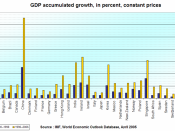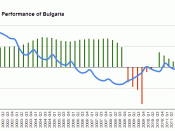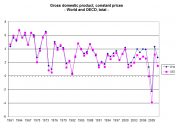The government and policymakers of a country intervenes in the economy in order to achieve economic growth, price stability, and low rate of unemployment.
First and foremost, economic growth can be defined as an increase in the country's output over a period of time. This means there is an increment in her productive capacity hence a rise in national income. A high economic growth is desirable as it represents an improvement in the material standard of living of the society. A rising real income per head brings about more and better quality goods and services, which are available for consumptions of individuals. However, an improvement in the case of consumer welfare due to economic growth is highly doubtful if the growth is accompanied by undesirable side effects such as negative externalities, leisure time forgone or even a dilution in the society's tradition & custom.
Through redistribution of income, economic growth can eliminate poverty.
A higher output allows households to enjoy more goods and services thus generating higher income and through the multiplier effect increases national income by folds. Besides that, the government's tax revenue will rise too, leading to more benefits for the poor such as education and training. This may even help curb the problem of poverty.
The authority also highly regards sustaining a stable price level as a primary objective of economic policy. This is because inflation, defined as a sustained and inordinate increase in the general price level, could have harmful effects both socially and economically. A rising price level creates uncertainties and complicates decision-making, thus may hamper economic growth. Fluctuations in the level of prices makes information conveyed by prices harder to interpret. Consumer, firms, and the government may face a tough time in allocating funds or resources for the future in an inflationary environment. Furthermore,


